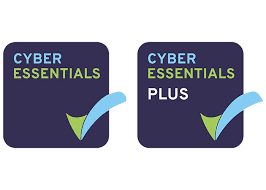In our digital age, where businesses traverse an intricate web of virtual networks and technological systems, cybersecurity stands as an impermeable pillar. An organization’s cybersecurity posture, i.e., its collective cybersecurity status and capabilities, plays a pivotal role in safeguarding its ecosystem from the perennial threat of cyber-attacks and breaches.
This piece highlights the general steps imperative to elevate a business’s cybersecurity posture, encasing it in a robust, unyielding fortress of digital security.
Step 1: Establish a Perimeter Firewall
The perimeter firewall acts as the initial line of defense against cyber-attacks, separating a corporate network from the uncharted territories of the internet.
- Configuring Firewalls: Implement a well-configured firewall that scrutinizes inbound and outbound traffic, permitting or denying data packets based on a pre-established security policy.
- VPNs and Secure Connections: Deploy Virtual Private Networks (VPNs) to ensure secure remote access and safeguard data transfer across networks.
- Continuous Monitoring: Regularly monitor the firewall logs and alerts to stay abreast of potential threats and to make informed decisions in augmenting firewall rules and policies.
Step 2: Endpoint Security on Devices
Every device (endpoints) connected to the network can potentially be an entry point for cyber threats.
- Antivirus Software: Employ comprehensive antivirus solutions to scan, identify, and neutralize malicious software.
- Patch Management: Ensure timely updating of endpoint devices, patching vulnerabilities to fortify them against exploits.
- Access Control: Establish stringent access control policies, ensuring that only authorized individuals can access critical business data.
Step 3: Embrace Endpoint Detection and Response (EDR)
EDR systems bolster endpoint security by meticulously monitoring endpoint and network events and recording the information in a central database to be analyzed, searched, and forensically evaluated.
- Behavioral Analysis: Leverage EDR to scrutinize the behavior of applications and processes to discern any aberrant or malicious activity.
- Incident Investigation: Utilize analytical tools to delve into security incidents, ensuring a thorough investigation and adequate response.
- Threat Hunting: Proactively hunt for potential threats, curbing them before they escalate into critical security incidents.
Step 4: Set Up a 24/7 Security Operations Center (SOC)
A dedicated SOC team vigilantly oversees the organisation’s cybersecurity, ensuring it is capable of detecting, analysing, and responding to cybersecurity incidents.
- 24/7 Monitoring: Ensure continuous vigilance to promptly identify and respond to threats and incidents.
- Incident Response: Implement an incident response plan (IRP) that details the procedures to follow when a cybersecurity incident occurs.
- Collaboration: Foster a collaborative environment where SOC teams, IT staff, and management coalesce to formulate and refine cybersecurity strategies.
Step 5: Ensure Rapid Response Time
The potency of a cybersecurity framework is as much about anticipation as it is about swift response.
- Service Level Agreements (SLAs): Define and adhere to SLAs, ensuring that incidents are addressed within a stipulated timeframe, such as a 45-minute response time.
- Automation: Leverage automation in the response strategy to accelerate detection and containment of incidents.
- User Training: Educate users on recognizing and reporting suspicious activities, contributing to a quicker response loop.
Step 6: Data Protection and Backup
Guarding the data itself is paramount in a comprehensive cybersecurity strategy.
- Data Encryption: Encrypt sensitive data, both in transit and at rest, to shield it from unauthorized access and breaches.
- Backup Strategies: Implement regular data backups and ensure that they are stored securely, enabling swift data recovery post an incident.
- Data Management: Establish policies governing data creation, storage, transfer, and deletion, ensuring it is managed securely throughout its lifecycle.
Step 7: Legal Compliance and Standards Adherence
Conforming to legal and regulatory mandates is essential to avoid non-compliance repercussions and to reinforce cybersecurity.
- Regulatory Compliance: Ensure the business adheres to relevant laws and regulations pertaining to cybersecurity and data protection, such as GDPR or HIPAA.
- Security Certifications: Acquire certifications like ISO/IEC 27001 to affirm the organization’s commitment to maintaining high cybersecurity standards.
Step 8: Continuous Assessment and Improvement
Cybersecurity is an evolving sphere, necessitating a strategy of continuous refinement.
- Risk Assessment: Periodically conduct cybersecurity risk assessments to identify potential vulnerabilities and to fortify defenses.
- Security Audits: Engage in regular security audits and encourage external audits for an unbiased evaluation of the cybersecurity posture.
- Technological Updates: Stay abreast of technological advancements and incorporate cutting-edge cybersecurity solutions as appropriate.
Conclusion
Improving a business’s cybersecurity posture intertwines various elements, including robust perimeter defenses, meticulous endpoint security, adept response teams, and an unceasing commitment to improvement and compliance. Amidst the burgeoning complexity of the cyber domain, safeguarding a business’s digital assets, networks, and data is tantamount to safeguarding its operational integrity, financial stability, and organizational reputation.
Navigating through the labyrinth of cybersecurity might appear daunting, but with a structured, multi-faceted approach, businesses can fortify their digital realms, ensuring that they remain impervious to the ever-evolving cyber threats that loom in the virtual shadows.




